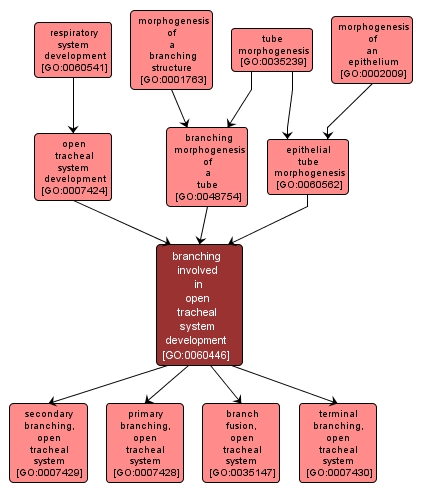GO TERM SUMMARY
|
| Name: |
branching involved in open tracheal system development |
| Acc: |
GO:0060446 |
| Aspect: |
Biological Process |
| Desc: |
The process by which the anatomical structures of branches in the open tracheal system are generated and organized. Morphogenesis pertains to the creation of form. |
|

|
INTERACTIVE GO GRAPH
|














